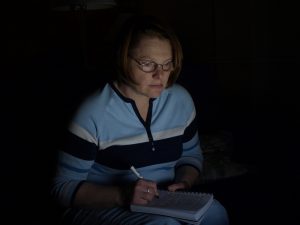
More and more hospitals are requiring that their nurses have at least a bachelor’s degree in nursing, according to this article in the New York Times.
Jennifer Matton, for example, is working as a nurse right now. However she is working at a hospital that has the bachelor’s degree requirement, so she’s fitting classes in between her job, church groups, and chauffeuring her four children to various activities.
This shift has contributed to a surge in enrollment in four-year nursing colleges, with about 90,000 people enrolled in various “R.N. to B.S.N” programs, up from about 30,000 a decade ago.
Nursing is still such a strong field that nurses without bachelor’s degrees are still in demand. But experts say that might change in the future, especially at hospitals.
Ms. Matton’s hospital is increasingly typical in that it will hire nonbaccalaureate nurses but then requires that they finish their baccalaureate degree within a certain number of years.
This is still relatively rare, but the number is rising fast. Most of the growth has occurred in the past five years. Surveys show that most hospitals prefer to hire nurses who have B.S.N.s but they often just can’t find enough of them. There are also various laws in process that would require bachelor degrees of some hospital staff nurses within 10 years.
All of this is sending many nurses back to nursing school.
Not long ago, most nurses did not go to college at all, but to nursing schools run by hospitals — including one still run by Abington — that do not confer degrees. As recently as the mid-1980s, half of the country’s registered nurses had started that way. But by then, hospital-based schools were closing in droves, and community college education was becoming the norm.
Still, professional groups and employers continue to push for more education, citing studies linking better-educated nurses to better patient care. Where traditional nursing education focuses on practical skills, students in four-year programs learn more about theory, public health and research.
An added incentive for hospitals is the coveted “magnet” designation, awarded by the American Nurses Association to about 400 hospitals and sometimes featured in their advertising. Among the association’s criteria for magnet status is the nursing staff’s level of education.
A 2008 federal government survey showed that among newly minted nurses, only 3 percent had graduated from nondegree programs, 58 percent from community colleges, and 39 percent from four-year colleges. With more of them returning to school, half of the nation’s 3 million registered nurses had a bachelor’s or master’s degree in nursing.
In 2010, the Institute of Medicine called for raising that figure to 80 percent by 2020, but that is a tall order.
“The baccalaureate programs can’t find enough qualified instructors, so they turn away tens of thousands of qualified applicants every year,” said Geraldine Bednash, chief executive of the American Association of Colleges of Nursing. “There’s going to be a big need for community-college-educated nurses for a long time, but they may be increasingly limited to nonhospital settings.”
But many community colleges are finding ways to appeal to students who want more than an associate degree. A handful of community colleges have won permission to offer bachelor’s degrees in nursing — notably Miami Dade College, one of the nation’s largest, which started its bachelor’s program in 2008 — and other schools have petitioned state regulators and accreditation agencies to do the same.
Many more junior colleges have made arrangements with four-year colleges to help nursing students move more readily from one to the other. In Oregon, eight community colleges and the state’s Health and Science University have shared a nursing curriculum since 2006, an approach since adopted by others around the country.
“I really don’t foresee a day when the nursing pipeline can continue without community colleges, but we have to take steps to ensure our graduates remain marketable, and some programs may not survive in the long run,” said Nell Ard, director of nursing at Collin College, a community college outside Dallas. Each Collin nursing student is enrolled simultaneously in one of two four-year state schools, allowing for a seamless transfer.
But a bachelor’s program sets a high a bar for many would-be nurses and working nurses, who are older than their counterparts of a generation ago and are more likely to have family obligations. It is, increasingly, a second career; the typical starting age is around 30.
“My school puts more pressure on us, no question, and more household stuff falls to the wayside,” said Ms. Matton, 37, sitting in her kitchen and eating a hamburger her husband had waiting when she got home. She shifted a few years ago to working part time.
Yet she endorses the bachelor’s requirement, pointing to the high stakes of her job, working in the emergency room. On a recent day that she described as slow, she had treated, among others, a middle-aged man who fainted in the heat and needed a cardiac work-up, a young woman in withdrawal from an opiate addiction, a pregnant woman with abdominal pain who spoke no English, an elderly woman with a badly infected thumbnail, an elderly man with gastrointestinal bleeding who had an adverse reaction to a plasma transfusion, and a young man whose tingling hands, head pain and elevated blood pressure persuaded a doctor to order a CT scan.
“It blows me away how much influence nurses have on serious treatment decisions,” Ms. Matton said. “After going back to school, I think more critically about what we’re doing, and I have a better understanding of why we’re doing it.”
